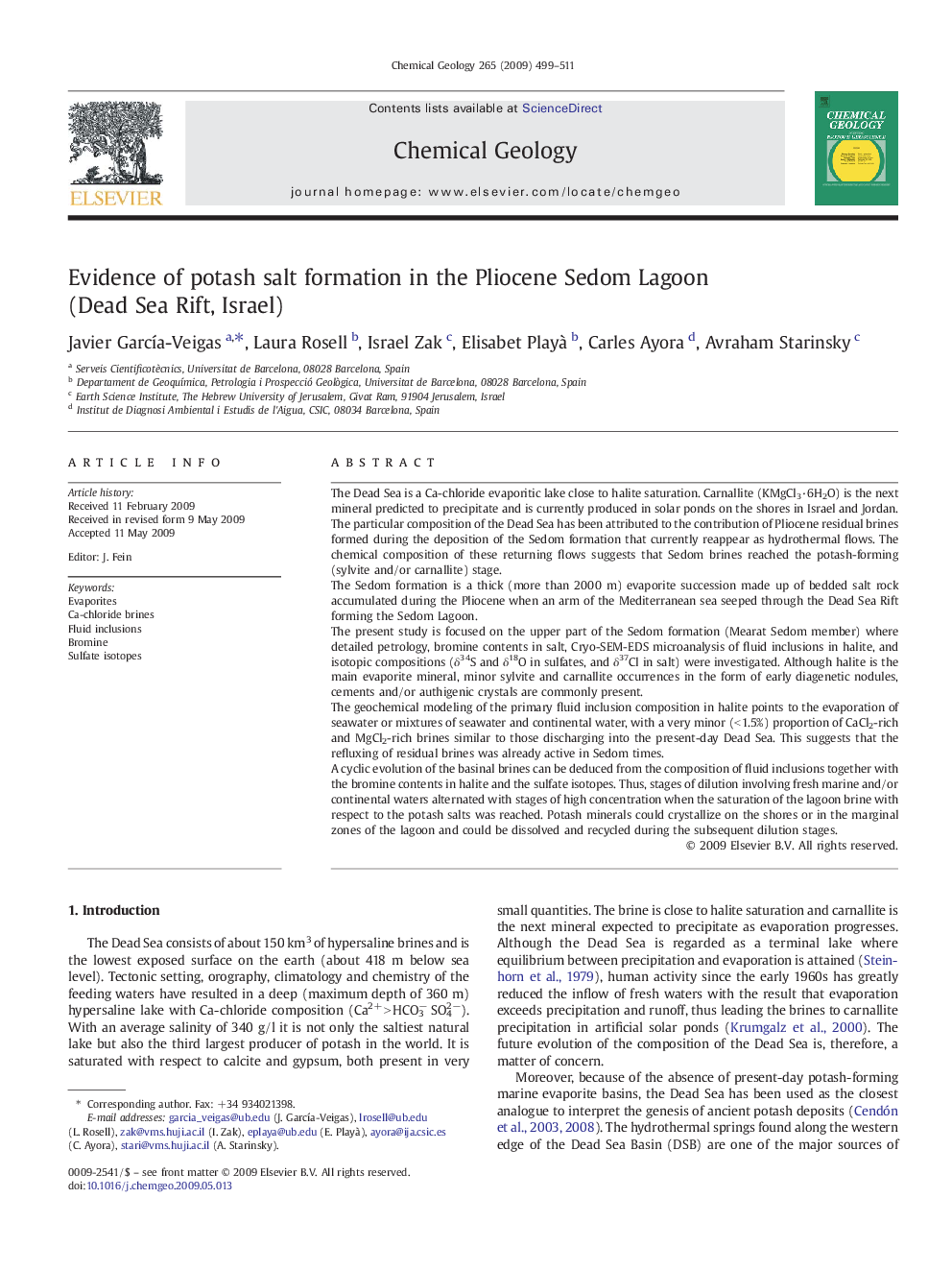| کد مقاله | کد نشریه | سال انتشار | مقاله انگلیسی | نسخه تمام متن |
|---|---|---|---|---|
| 4700232 | 1637703 | 2009 | 13 صفحه PDF | دانلود رایگان |

The Dead Sea is a Ca-chloride evaporitic lake close to halite saturation. Carnallite (KMgCl3·6H2O) is the next mineral predicted to precipitate and is currently produced in solar ponds on the shores in Israel and Jordan. The particular composition of the Dead Sea has been attributed to the contribution of Pliocene residual brines formed during the deposition of the Sedom formation that currently reappear as hydrothermal flows. The chemical composition of these returning flows suggests that Sedom brines reached the potash-forming (sylvite and/or carnallite) stage.The Sedom formation is a thick (more than 2000 m) evaporite succession made up of bedded salt rock accumulated during the Pliocene when an arm of the Mediterranean sea seeped through the Dead Sea Rift forming the Sedom Lagoon.The present study is focused on the upper part of the Sedom formation (Mearat Sedom member) where detailed petrology, bromine contents in salt, Cryo-SEM-EDS microanalysis of fluid inclusions in halite, and isotopic compositions (δ34S and δ18O in sulfates, and δ37Cl in salt) were investigated. Although halite is the main evaporite mineral, minor sylvite and carnallite occurrences in the form of early diagenetic nodules, cements and/or authigenic crystals are commonly present.The geochemical modeling of the primary fluid inclusion composition in halite points to the evaporation of seawater or mixtures of seawater and continental water, with a very minor (< 1.5%) proportion of CaCl2-rich and MgCl2-rich brines similar to those discharging into the present-day Dead Sea. This suggests that the refluxing of residual brines was already active in Sedom times.A cyclic evolution of the basinal brines can be deduced from the composition of fluid inclusions together with the bromine contents in halite and the sulfate isotopes. Thus, stages of dilution involving fresh marine and/or continental waters alternated with stages of high concentration when the saturation of the lagoon brine with respect to the potash salts was reached. Potash minerals could crystallize on the shores or in the marginal zones of the lagoon and could be dissolved and recycled during the subsequent dilution stages.
Journal: Chemical Geology - Volume 265, Issues 3–4, 30 July 2009, Pages 499–511